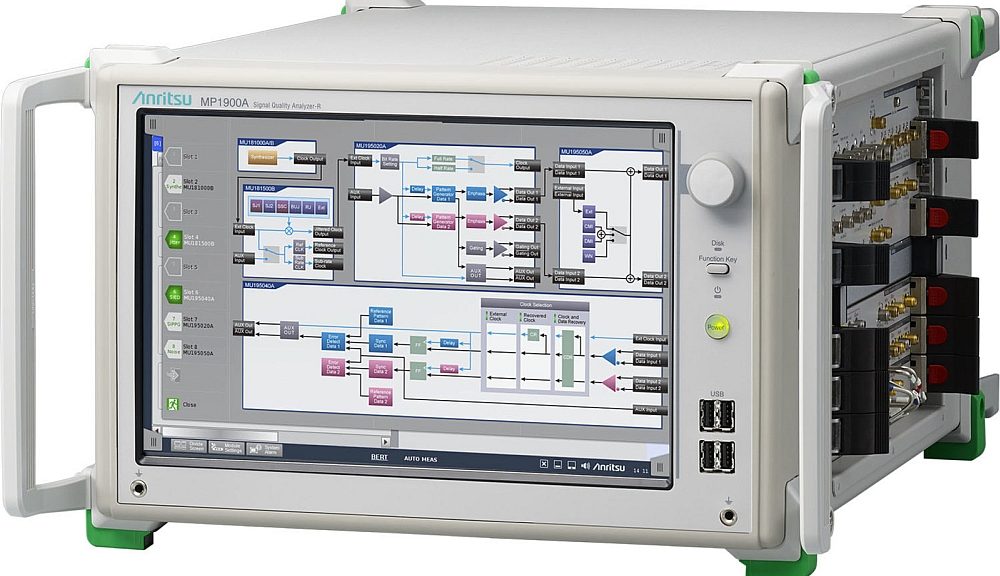Anritsu introduces the Signal Quality Analyzer (SQA) MP1900A Bit Error Rate Tester (BERT), a solution that can measure next-generation PCI Express Gen 4 and Gen 5 buses, as well as the latest 400 GbE/200 GbE Ethernet networks.
Anritsu introduces the Signal Quality Analyzer MP1900A that supports simultaneous multi-channel measurements, PAM4 BER tests, and PCI Express link negotiation.
The SQA MP1900A Bit Error Rate Testers (BERTs) can evaluate high-speed interface designs during the early development stage. Its all-in-one, extendible platform can measure performance of network-side interfaces, such as 400 GbE, 200 GbE, and 100 GbE, as well as internal PCI Express bus interfaces.
The built-in Pulse Pattern Generator (PPG) has intrinsic jitter of typically 115 fs rms, as well as typical Tr/Tf of 12 ps. Total peak-to-peak jitter is typically 6 ps max. and typical input sensitivity of the internal Error Detector (ED) is 15 mV.
A Link Negotiation Function supporting high-speed digital interface standards is used to connect the MP1900A to the DUT for improved bus interface evaluation. Engineers can use the Function to conduct PCI Express Gen 4 and Gen 5 tests, LTSSM status analysis, jitter generation, and CM/DM noise injection. A Jitter Measurement Function evaluates signal integrity, while a 10Tap Emphasis Function and Equalizer Function can be used to characterize test signals according to transmission path loss.
The SQA MP1900A BERT can also be configured with peripheral equipment for expanded measurement capability. An integrated solution featuring the MP1900A can support generation of 32 Gbaud and 64 Gbaud PAM4 signals required for 200 GbE and 400 GbE measurements, BER measurements, jitter and amplitude noise injection, and emphasis addition, for future-proof standards support.
The MP1900A has an GUI that can display block diagrams on the instrument’s touch-panel 12.1″ display. Remote commands matching each GUI function can be displayed on-screen to shorten configuration time for automated measurements.






